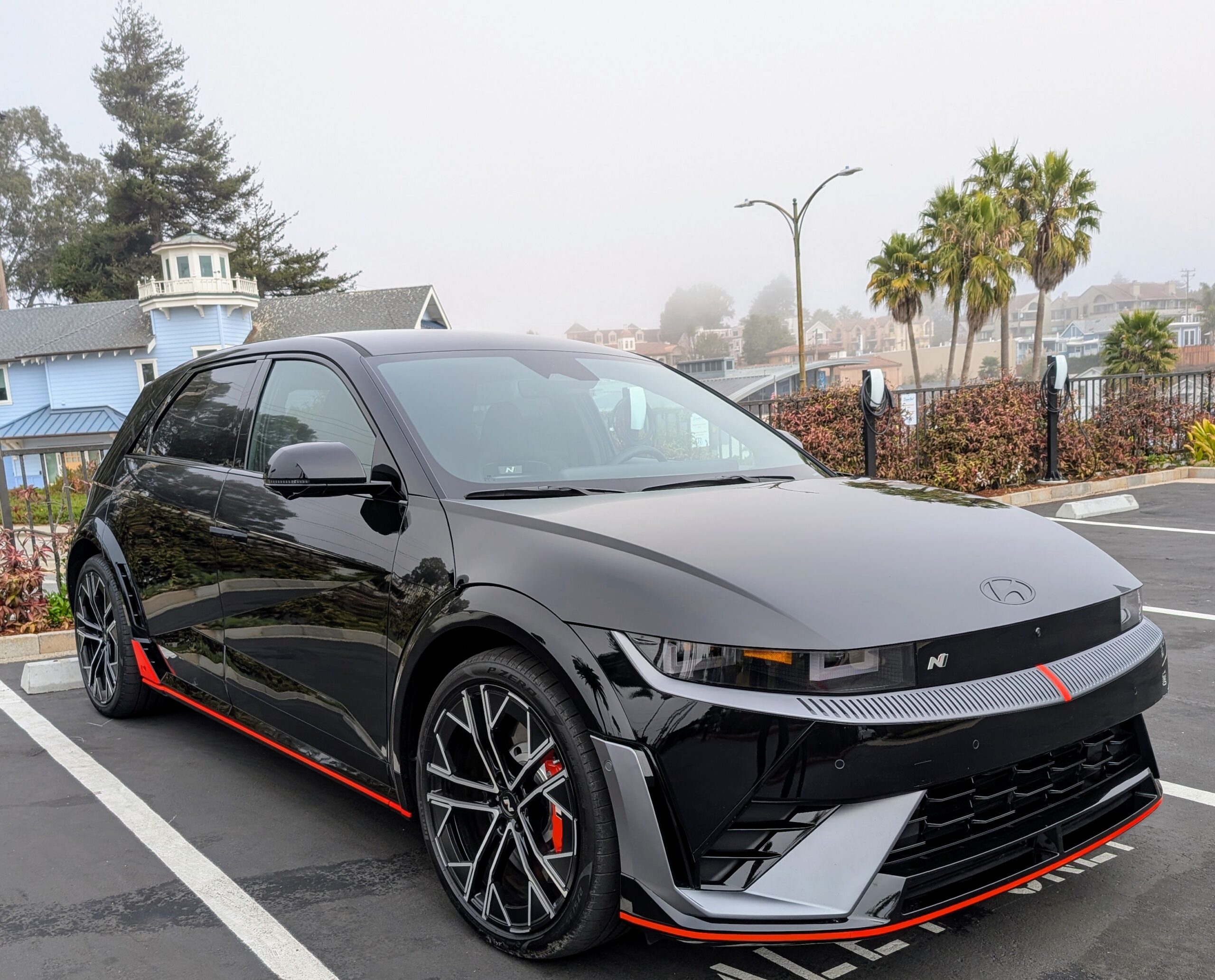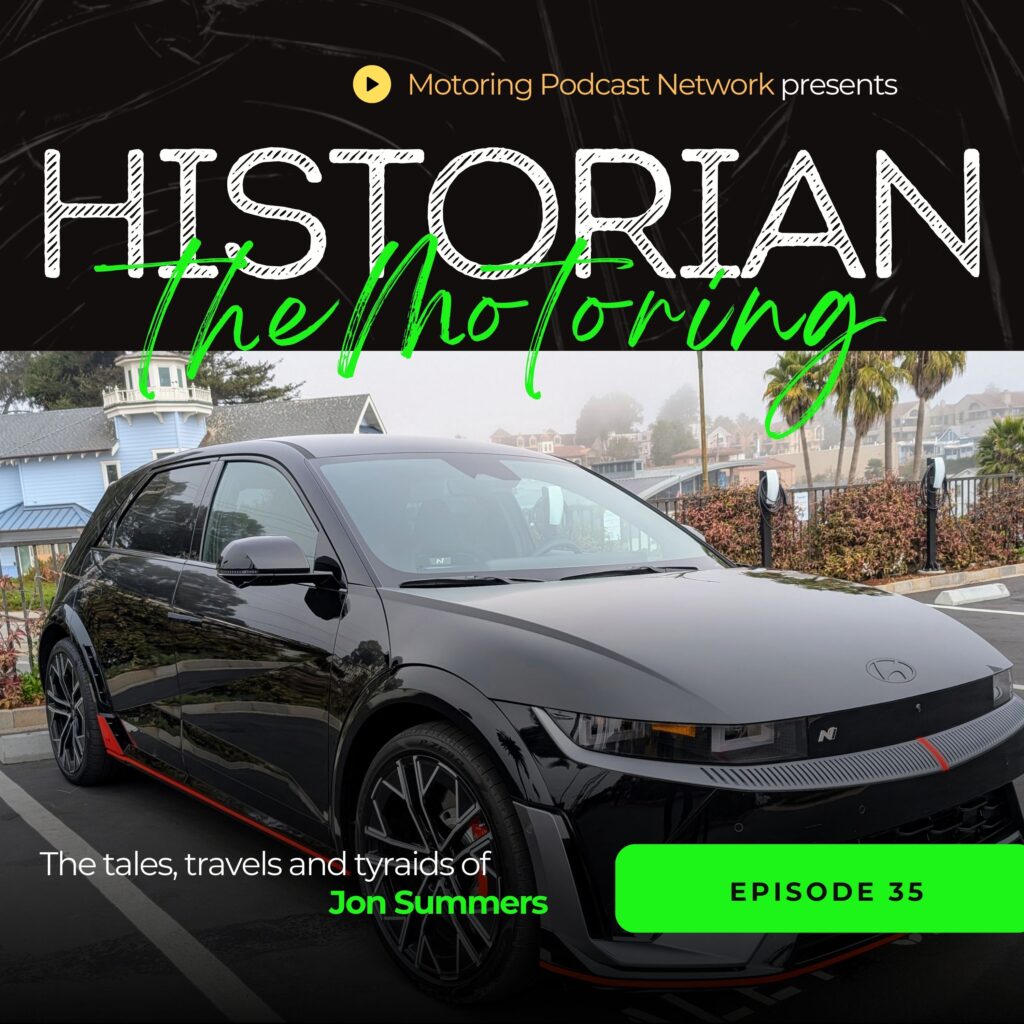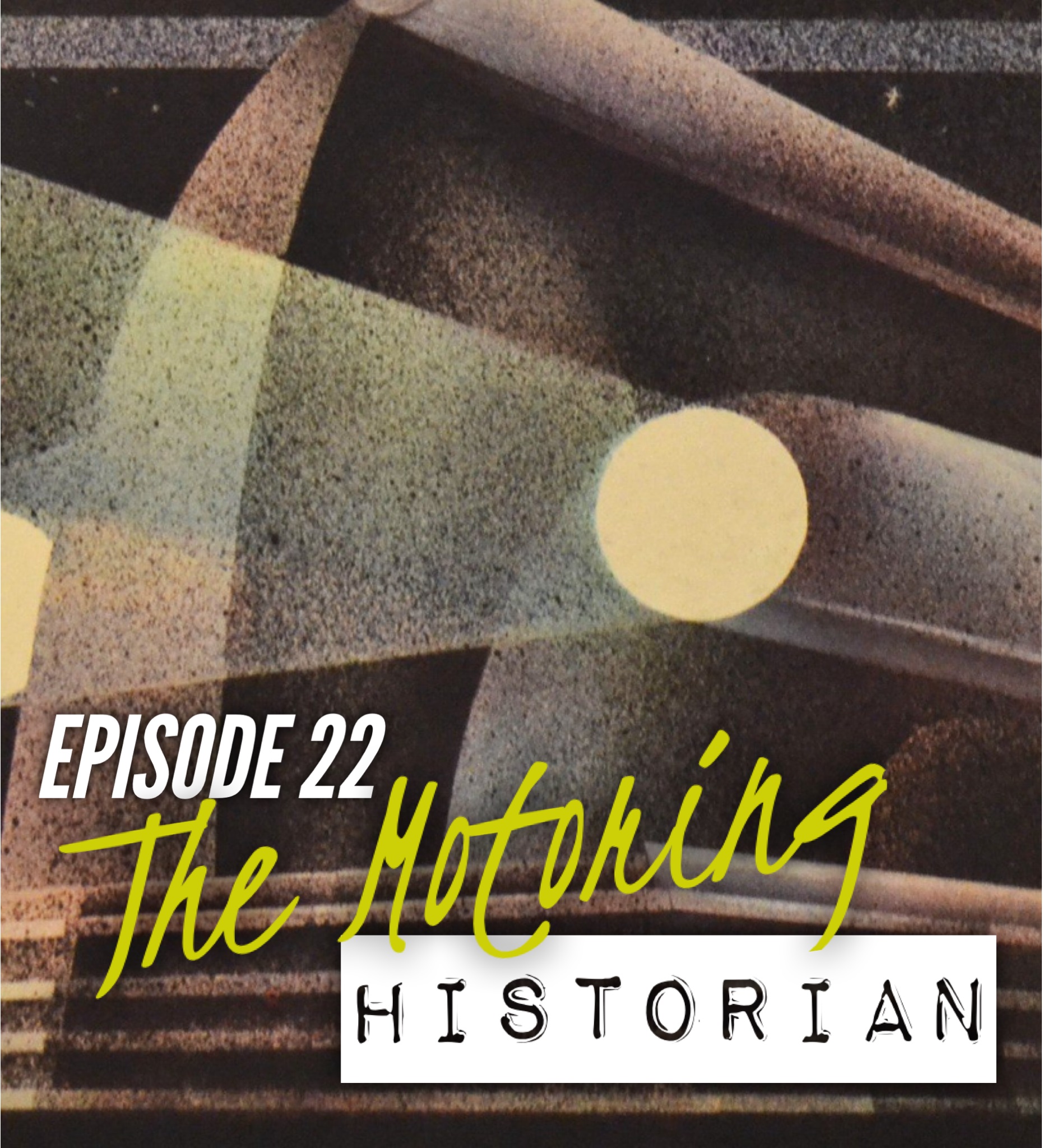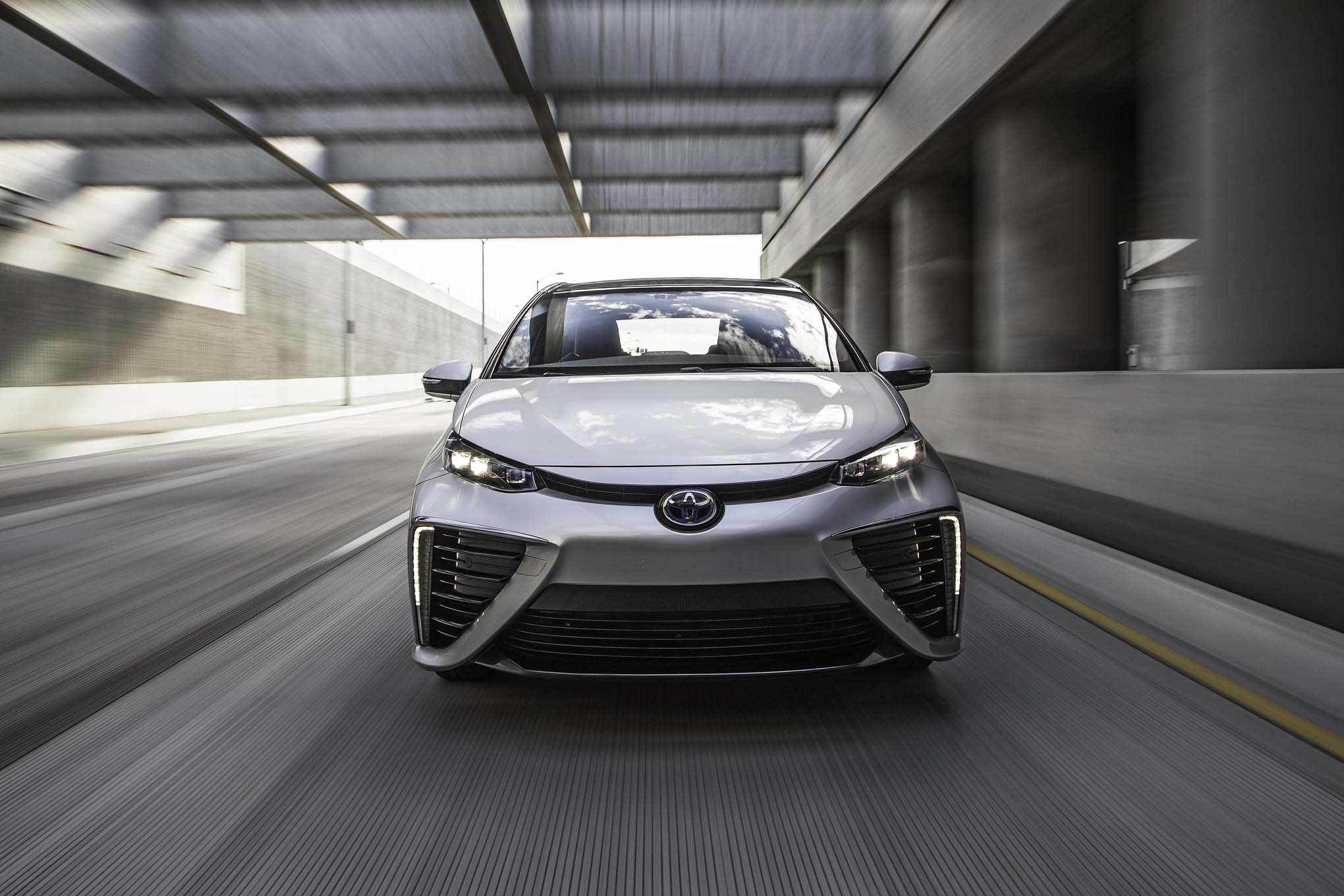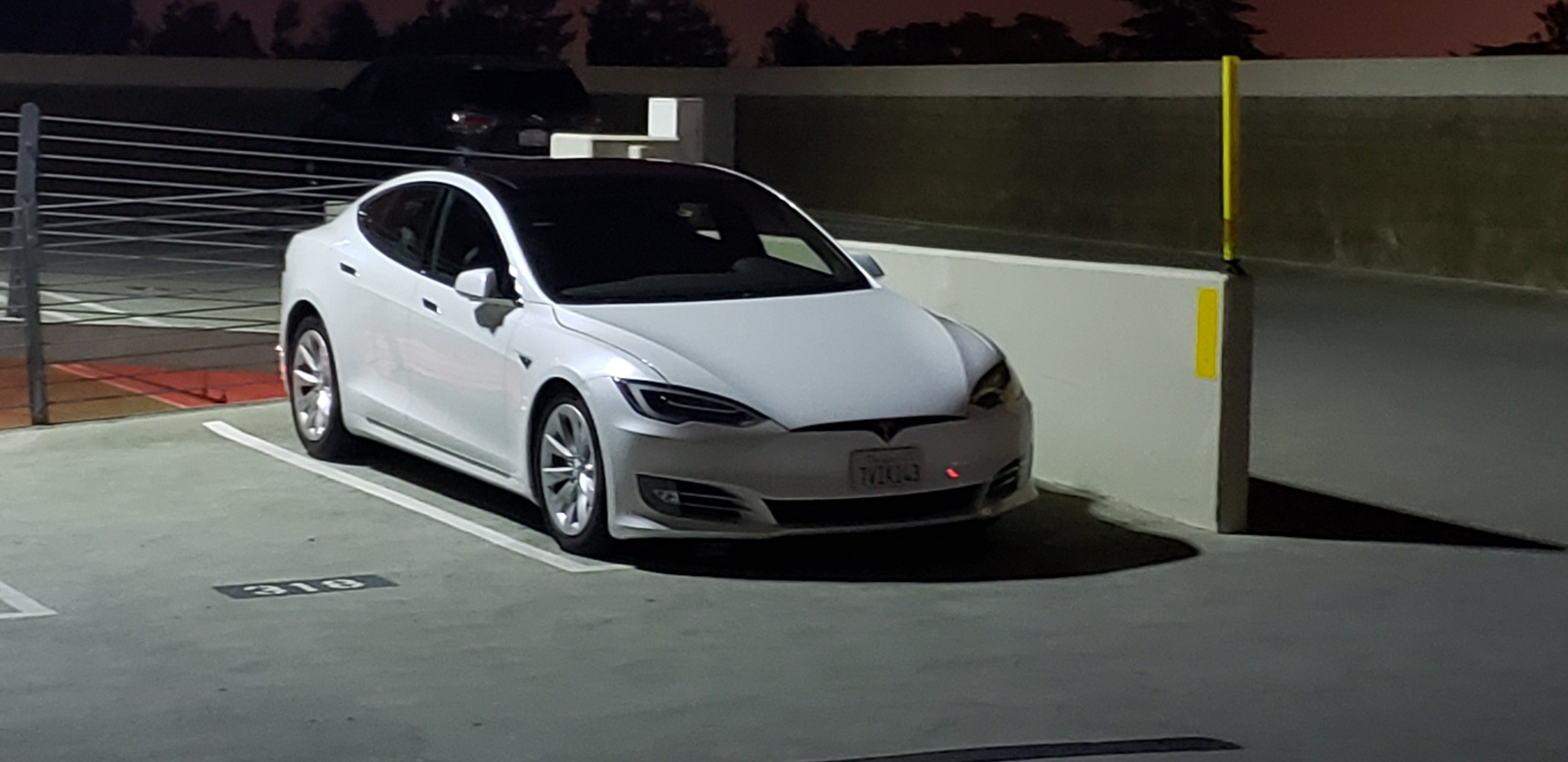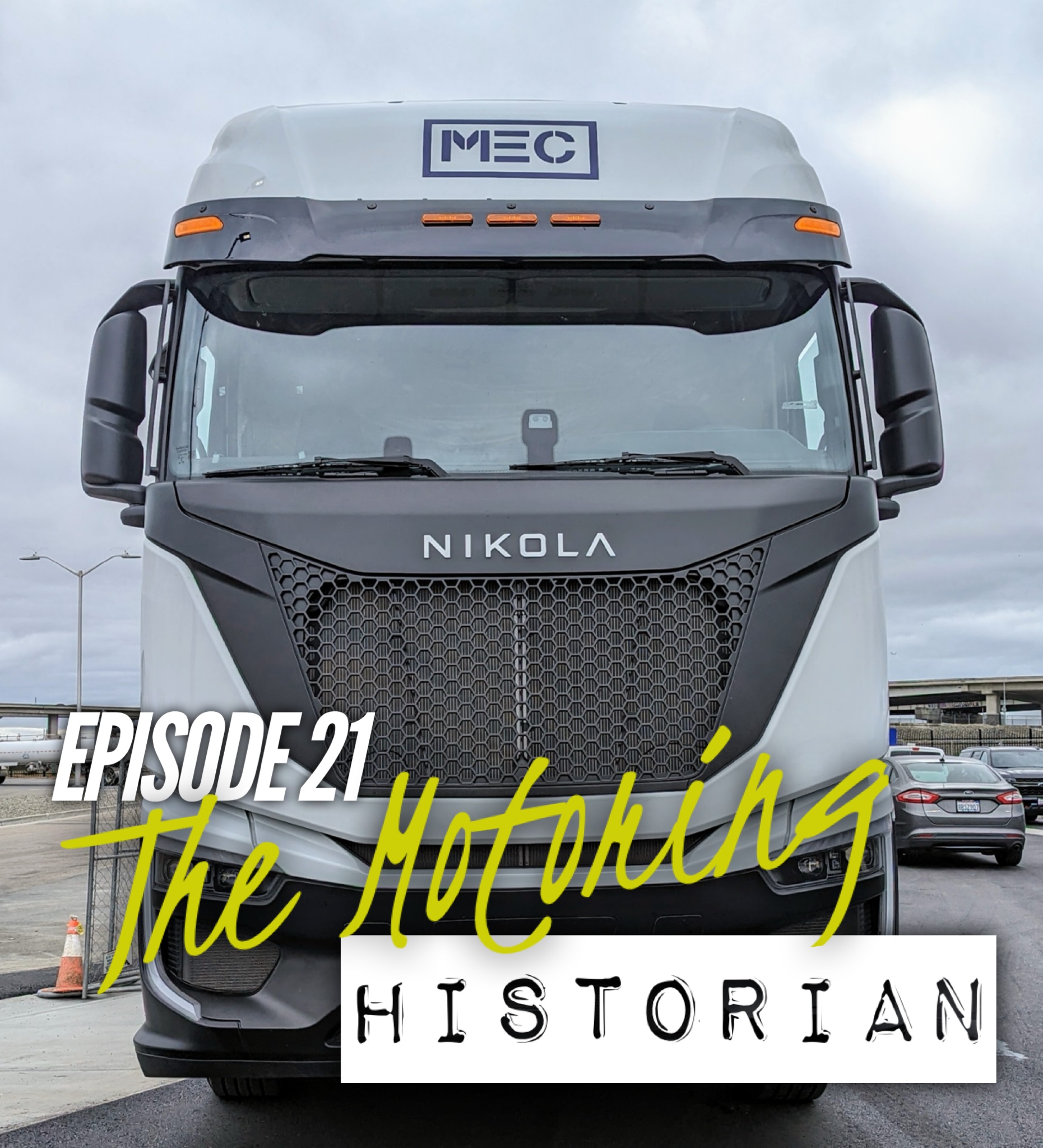Notes
Jon Summers is the Motoring Historian. He was a company car thrashing technology sales rep that turned into a fairly inept sports bike rider. On his show he gets together with various co-hosts to talk about new and old cars, driving, motorbikes, motor racing, motoring travel.
- Judas Priest – The Hellion
- Lexus GX550 – lovely materials justify the cost. Better quality than Genesis. Loved the giddyup.
- Judas Priest – Rock Hard, Ride Free
- Kia Sorento – nice looking interior, content awesome, surprisingly stable, responsive at high speed, irritating electric whirr
- Comparing screen treatments
- An aside on Acura ZDX – HUD display worked well
- Kia Carnival – No irritating whirr, tons of space, surprisingly planted in high speed sweeping turns, a modern state of the art minivan
- Judas Priest – The Sentinel
- Hyundai Ioniq 5 N – the triangle theme makes the Ioniq 5 an interesting piece of design. Perhaps short changed by driving only on slow roads. The gamification of performance; a 21st century turquoise shell suit of a car, “licence looser”, great value at sub $60k
- Hyundai Elantra N – Old school cool hot hatch. Buy this instead of the Ioniq, and save $20k. But a young person’s car. Coped well with emergency braking at high speed.
- Judas Priest – Defenders of the Faith
Transcript
[00:00:00] John Summers is the motoring historian. He was a company car thrashing, technology sales rep, that turned into a fairly inept sports bike rider. Hailing from California, he collects cars and bikes built with plenty of cheap and fast, and not much reliable. On his show, he gets together with various co hosts to talk about new and old cars, driving, motorbikes, motor racing, and motoring travel.
Good day, good morning, good afternoon. It is John Summers, the motoring historian. So in this episode, I road tested some new cars. It was a couple of months ago now. I’ve only just edited together into something constructive, but you know, here are my thoughts on some new cars. So my 9am on the Tuesday morning was the Lexus GS550.
I think the information said it was the premium plus. At the end of the day, [00:01:00] when I’d driven all the other cars, I came back to the Lexus and I touched the steering wheel and I touched the shift lever just to remind myself what did the material really feel that much nicer than the other stuff that I’d driven, specifically the Genesis, which were about the same price point.
The answer is yes. If you go to the dealership, either with a significant other, or if you yourself walk out of there thinking these Lexus guys, they’re building to a higher quality than Genesis, or I want that it’s worth paying the premium to have the Lexus over the Toyota. Uh, yes. Yes, this GS550 definitely conveyed that feeling of absolute quality.
And I, uh, I want to apologize to the Lexus because I didn’t mention them in the comments. And I really should have mentioned that really, if the Genesis stuff was very ostentatious and nouveau riche, and I [00:02:00] loved it. but that grill is very big. The Lexus is everything that those Genesis GVs was, but with so much more subtlety and the touch points, you know, they were actually the Genesis has lovely seats, but the touch points of the Lexus, Oh, just so nice.
And our car was dark green and that was so nice. And it was just lovely to drive. And, and I, uh, At one point, I put it half off the road and, and I realized if I just carried on driving forward, there was like a earth bank. So I just did that to be like, how is it going to cope with that? And it just drove up it as easily as, you know, a normal car would drive up, you know, not a high kerb, but a low kerb, you know, it just went boink up it, you know, no problem at all.
Like. Very, very impressive and this is going to be perverse, but right size, right? Not too big, not too wide, not too long can fit in normal sized American parking [00:03:00] spaces. And it’s a bit like when you’re choosing schools for your kid. And when somebody says to you, think about the commute. And you’re like, what on earth?
I want little Johnny to, you know, get the best teachers he possibly can. I’m going to make a judgment on that. And then you’re like, Oh yeah, if the commute is 15 minutes, that means I’m spending an hour a day in the car. Cause if the commute is a half an hour, that means I’m spending two hours day in the car.
Huge difference, huge difference, huge. But at first you don’t perceive that, and of course that reflects on the kid because the kid hates sitting in the car, and if you’re bad tempered, you know, it all spins off, right? So in other words, that commute, that is a significant factor, and the relevant comparison here with the Lexus is that that size thing.
That’s the, the three row SUV. They can be too big. They can feel too big. You can feel like, you know, excursion, you can feel, I wanna add that. F two 50 in Santa [00:04:00] Monica, you know, a current F two 50 is just too big, right? You could, you know, in the BMW you can fit down this car street with parked cars, with another car coming in an F two 50, you can’t, and you just have to be patient and it’s annoying and you wonder why you’re driving such a behemoth.
in city streets. And this Lexus did not leave me feeling like that. It felt it was right sized. Bloody cool. So what else did I write down? Great throttle response. Two screens. Weird instruments. These, these moderns have a lot of screens. And this is the first car I drove. So I was probably coming to terms at the moment, at that time with, you know, the fact that it had any screens at all.
Yeah. Yeah. Couldn’t find the heater. It was cold, so the rep had put the heater on, and it was nice when I first got in here, but then I couldn’t turn it down. So I kept opening the windows to cool down and then putting it back up again, because I just didn’t know how to access the infotainment thing. Now this is what’s hard about [00:05:00] assessing the cars, because that was clearly user error.
I’m sure it has a really easy way to access the heater system. I just have, like, a left handed, cack handed Blood I, you know, I just didn’t learn how, just put the window down instead. I rode so chuckable, the car shrinks around you. Did feel like a car, didn’t feel like a, felt nothing like a body on frame SUV.
My last two comments were, but where are the fucking heater controls? Why the big pointless screen, and then separately, love the giddyup. Yeah, and I did love the giddyup. So, all around great car, marred only by the tester’s ineptitude and inability to find the, uh, the heater controls. And I should say, you know, I drove it on the back of having this Toyota truck, and, and the truck keeps on doing what it says on the tin.
You know, it just works. Which is all I wanted to do. [00:06:00] This Lexus had that feel about it. You know, there’s no like, it’s not showy. The styling apes land cruisers, but it just has that sort of retro feel. It’s, it’s, there’s nothing actually retro about it. The overall experience is very modern, very clean, very usable, very luxurious because of those materials.
It was a very high bar. That first vehicle set I felt.
So the next vehicle I drove was the Kia Sorento, which is, uh, like an SUV, I guess, like a Honda CRV, like RAV4 size SUV. I wrote, the first thing I wrote was lovely inside to look at. Now the feel was definitely not [00:07:00] Lexus, the feel of the materials, but the look. It’s so much closer to something really nice like that Lexus than you would ever expect.
Now the price point here, we were high fifties for this guy. So is there a noticeable difference between the 71 for the Lexus and the high fifties for, for this nicely appointed Sorento, Kia Sorento? Yes. Yes. Now this weird, like hybrid EV were the whole time, which, which I didn’t like. It’s just something that the Kia’s had that, interestingly, the Genesis didn’t have.
And it’s that the screens were curved slightly. I just want to talk about the screens, actually. You know, when I say they’re curved, a little bit like the way a Sierra’s dashboard used to be, if you can remember a Ford Sierra. Um, you know, in the, the, it just bends a little bit towards the driver and they were rounded off.
In the Genesis, they weren’t curved, they were rectangular and they weren’t. They curve towards you and they weren’t [00:08:00] rounded off in, in, in the same way. And, uh, I, I thought on the Kia, the rounding off and the curve towards the driver, I thought that was a really kind of elegant touch. Both of them did quite a good job at putting, making the screens unobtrusive, that having done the back to back to back to back driving of these cars, sort of speed dating of cars, if you will.
Having done that. I appreciate more and more how some makers have listened to what people have said about not liking screens and not wanting everything to be buried deep in drop down menus a la Tesla. And, and now what we do is we don’t have these big, like, tablet embedded on the screen, like, tablet embedded on the dashboard.
Hey, footnotes. We seem to be moving towards these sort of two or three inch high, sometimes more, sometimes four or five. But these instrument displays that are sort of around, like, below your eye [00:09:00] line. And a lot of these cars were doing the Honda, which I didn’t really The Acura, rather, that I didn’t have.
ZDX is the model, by the way. I didn’t really have much to say about it. It didn’t leave much of an impression on me in comparison to some of the other vehicles that I drove. But that ZDX, the one thing that was noticeable about that was the heads up display worked really well. A number of them had heads up.
Some of them it was distracting. Some of them it wasn’t bright enough. I didn’t notice it until the end. I dare say you can adjust to all that stuff, but, you know, that’s just the experience as it was, uh, as it was dealt with. To, to me, but look right through the suitcase. Sorrento had that. So did the Keir Carnival, the minivan that was going to talk about next.
So the content, awesome. The, the actual touch and feel, you know, not so, not quite so impressive. At freeway speeds, it was still responsive, right, which is the hybrid thing, but it really felt luxurious. It was very quiet at those kind of freeway speeds, and it felt as if it could go beyond. Allegedly, [00:10:00] other people, not me, allegedly it did well at much higher speeds than you would expect a mid priced minivan to cope with.
So yeah, so that was a pretty impressive piece of kit, there was just the annoying whirr all the time. Didn’t like that. Now, the Kia Carnival’s the minivan and it did not have that same annoying whirr. It was in a nice grey colour. That was the one that had the head up display that I found annoying. Maybe I just needed to adjust the brightness.
The gas motor was loud when it cut in. That was another comment that I made. The trunk lid was super. Like the load bed was like low, below the level of where the seats were mounted, like the normal floor, if you like. I guess because the hybrid or whatever. The design of it, for space wise, was just, you know, what MPVs always are, but next generation all around that.
You know, that was That was impressive. The other thing that I wrote was that it was surprisingly planted in high [00:11:00] speed sweeping turns. And this is what a coast road allowed. I didn’t think I’d taken it out along the coast road because I, I, that was when I, one of the first drives that I did. And that was when I realized that the forest route wasn’t going to be any good.
And I got out of it at the top of the hill and had a like, like a look around. And you know, I would say that I didn’t do that with all the cars, but with. Both of these keyers, the fit and finish, bloody awesome. The panel fit, the quality of the paint. I mean, I’m no paint inspector. I just like to look round and you know, you just feel like the overall standard, you feel like the overall standard is so much higher than it ever used to be.
Billing got some of that tequila I was talking about earlier, and it’s invigorated me to talk on about the, uh, next couple [00:12:00] of cars that I drove. So, it’s now sort of midway through the first morning of cars, and you now know the route off by heart, you know. Worrying about, should I be turning this way or that way?
You know where you need to be going and you can really focus on just, you know, making the most of, uh, of the cars rather than feeling like half an hour, wasn’t enough time. It was never like half an hour was enough. I was like too much time, but it definitely became easier as the day went on to get the car back at exactly the right time and feel like you’d actually experienced it completely.
One thing I did regret was I used. I did the IONIQ 5N, which is the performance version of like the triangle IONIQ 5, Hyundai IONIQ 5, um, which is really quite an interesting product to look at. Anyway, it’s the most, for me, it’s the most interesting interpretation of the whole, like, how do you do an SUV?
It’s the most interesting interpretation of that, outside of, of something like [00:13:00] the, In comparison to the Ferrari Purosang or something like that, which is sort of not really, uh, it is an SUV, but it doesn’t really have SUV proportions. Ioniq 5 has SUV proportions, but by doing those triangles and that kind of matrix thing they’ve got, they’ve created.
Uh, sort of citron cactus, like completely different looking and feeling kind of product and like the Scion XB or, you know, that kind of thing that can really be appealing and can be compelling. Hyundai’s N brand is. Compelling. They had a couple of N branded vehicles here. We’ll talk about the Elantra in a moment, but the Ioniq 5 N looked awesome.
Really, really did look awesome. Little skirts. The one that we had was black. I saw one on the street just earlier today that was white and, and the black one that we had, it had sort of orange accents. It really did look good. The steering wheel looks like a [00:14:00] gaming console steering wheel. It has this weird sort of push to pass kind of thing.
And a lot of the others were really impressed with, if you put it in like the sport mode, it would shift up and shift. Down as if you were driving a stick shift when our stick shift cars, if you were driving a gas powered car with a paddle shifter, you know, it would even like do the rev match down shifts and you know, snap, crackle, and pop in the exhaust.
So there’s something faintly comical about that, isn’t there? And it’s not quite Tesla’s fart mode, but it’s near that kind of, it’s approaching that kind of, of absurdity. There’s a sort of gamifying of performance. You think about how seriously somebody like AMG or BMW’s motorsport division takes performance, you know, this was, was a humorless kind of business, you know, Bentley, you know, this is a gentleman’s [00:15:00] club.
This is not an environment for, you know, fart jokes or loud shell suits. And, and, uh, Ionic N is, you know, uh, the 21st century version of the 1990s. Turquoise shell suit, isn’t it? It’s, it’s really a, a statement of the zeitgeist, which may be a little bit too much, but it’s still kind of cool, even if you wouldn’t really wear one yourself.
So what else? What did I actually write down about it? Crap turning circle. Feels track tight. I, I wrote Impreza and put a circle around it and that was because I, I, it reminded me of the first time I drove a Subaru Impreza Turbo and I remember coming out of like a greasy uphill. Junction that was like, Oh, I was kind of turning back on myself that the T wasn’t like a T.
It was like, you know, um, so it was more than a [00:16:00] 90 degree turn. And I remember this Subi because it was all wheel drive. It just like picked up at the front. And I’d never experienced that before. You know, I knew front wheel drive cars. I knew real drift cars. I never knew one that had got, you know, the benefits of both.
And that’s what I realized with the Subaru Impreza Ionic 5, it had that sort of feeling of absolute completeness and, and sure footedness. This was the one with the high trunk floor. It was a carnival with a low, huge trunk. It was the Ionic 5 that had the really high trunk floor. Alcantara seats. I also wrote down License Loser, um, that it walks and talks like a hot hash.
Yeah, I mean, that’s state of the art, super cool, hot hatch, awesome piece of kit and sub 60k, which, you know, in today’s world, something that cool for sub 60k, that feels extremely good value. And that was, uh, Because I did the [00:17:00] forest route in it and I didn’t get out and drive it really fast. Maybe I shortchanged it a little bit in the overall best of the bay analysis.
Maybe if I’d have done the, uh, you know, route along the coast there instead of the route up the hill, I’d have felt a little differently, uh, a little differently about it. But yeah, impressive, but. Clearly, right, an event where you’re driving cars back to back over the same route, clearly you have to be comparing them one with another.
And when you’ve got Elantra N, that you’ve driven straight after the Ioniq 5 N, you know, mid size hatchbacks, one EV, one not, one 37 grand, one 57 grand, I was keen to compare them together. The Elantra’s old school. The Elantra N is old school. cool hot hatch. It’s a bit bigger than my Fiesta. It’s, you know, a bit more sophisticated automatic transmission, this kind of thing.
Got the [00:18:00] same like crazy, like push to pass, like turbo shift thing, like, you know, gamification of performance at the Ioniq N. The Elantra N had something like that as well. It also has the same kind of triangular kind of styling on the door. I think it translates very well to, to the hatchback. I’d have saved myself 20 grand.
I really would. I loved the Elantra N. It was, uh, fast. Only really frightening moment was, was somebody trying to pull out on me and I was going quite quickly and, and the car was, you know, in a curve and, and in a lesser car, it might have ended badly. And in that one, it handled the situation very, very well.
Indeed, it was ahead of me in terms of its ability to, to cope with the situation and. Yeah, so we enjoyed that car, really appreciated it, very well designed. Although, you know, it’s a [00:19:00] young person’s car, right? It’s a bit sporty and, and, you know, where’s my backwards baseball cap kind of thing, really? Yeah, the Elantra and Alcantara interior as well, like the engine note.
On startup after the EVs and, uh, you know, what do I do to make it go? Because this is one of the interesting things about all of these cars that we drove, was that they were like different methods of transmission, you know, different methods of actually putting it in gear. And that was kind of peculiar, to be honest.
You do feel it’s like the 1920s where we’ve not yet settled on the H pattern, you know, we’re just like getting there and some people you have a little lever and you toggle it up and others you push a button and you toggle it and the Fiat 500 you just have these buttons on the dashboard like P for Park, D for Drive, R for Reverse, you know, just, yeah, very, uh, Simple and that’s cool, but you know, but to finish up, look on the Elantra N and the Ionic 5N, which are then [00:20:00] natural to compare the two to finish up there.
One feels very much like tomorrow’s product and the other feels very much like a really nice version of yesterday’s product. Obviously, I’d be keen to take yesterday’s. DriveThru.
This episode has been brought to you by Grand Touring Motorsports as part of our motoring podcast network. For more episodes like this, tune in each week for more exciting and educational content from organizations like the Exotic Car Marketplace, The Motoring Historian, Brake Fix, and [00:21:00] many others. If you’d like to support Grand Touring Motorsports and the motoring podcast network, sign up for one of our many sponsorship tiers at www.
patreon. com forward slash GT Motorsports. Please note that the content, opinions, and materials presented and expressed in this episode are those of its creator, and this episode has been published with their consent. If you have any inquiries about this program, please contact the creators of this episode via email or social media as mentioned in the episode.
Highlights
Skip ahead if you must… Here’s the highlights from this episode you might be most interested in and their corresponding time stamps.
- 00:00 Introduction to the Show
- 00:37 Lexus GS550 Review
- 06:38 Kia Sorento Impressions
- 10:14 Kia Carnival Minivan
- 12:37 Hyundai Ioniq 5 N Experience
- 17:29 Hyundai Elantra N Comparison
- 20:14 Conclusion and Sponsor Message
Enjoy more Motoring Historian Podcast Episodes!
The Motoring Historian is produced and sponsored by The Motoring Podcast Network

